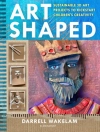[A] useful reference book. Readers will find themselves returning to chaptersagain and again…’
–Psyc Critiques
This is the 20th and final volume in the ‘Societal Impact on Aging’ series. It focuses on what has been learned over the span of the previous volumes regarding the continuing challenges for older persons in a rapidly changing society and tries to forecast what may be the next set of issues to lie at the intersection of social structures and the individual aging process. The editors therefore invited major organizers of, and contributors to, the 19 earlier volumes to review both the accomplishments and omissions of their efforts, discuss some timely new topics, and provide guidelines for future research and theoretical explanations.
The book is divided into five broad topics: health and wellbeing, including the role of religion; personality and cognition; the impact of changes in technology and the work place; issues of socio-cultural change and historical context; and the familial and societal contexts of aging.
Table des matières
‘
Contributors
Preface, K. Warner Schaie
Preface to the first volume in the series: Why this book?, Matilda White Riley
Introductory Overview
The Waters We Swim: Everyday Social Processes, Macro-Structural Realities and Human Aging, Dale Dannefer Section 1: Health and Well-Being
To Act or Not to Act: Using Statistics or Feelings to Reduce Disease Risk, Morbidity and Mortality, Howard Leventhal, Tamara J. Musumeci, and Elaine A. Leventhal Religion, Health, and Health Behavior, Neal Krause Commentary: Assessing Health Behaviors Across Individuals, Situations, and Time, David Almeida, Susan T. Charles, and Shevaun D. Neupert Section 2: Personality and Cognition
From Static to Dynamic: The On-going Dialectic About Human Development, Nilam Ram, Sylvia Morelli, Casey Lindberg, and Laura L. Carstensen Those Who Have, Get: Social Structure, Environmental Complexity, Intellectual Functioning and Self-Directed Orientations in the Elderly, Carmi Schooler and Leslie J. Caplan Commentary: Personality, Emotion, and Cognition: Some Comments, Freda Blanchard-Fields Section 3: Technology and the Workplace
Technology as Multiplier Effect for an Aging Work Force, Neil Charness No Career for You: Is That a Good or Bad Thing? David Ekerdt Commentary: New Employment Structures: Varieties of Impact on Aging Workers, James L. Farr and Alexander R. Schwall Section 4: Sociocultural Change and Historical Context
Aging, History, and the Course of Life: Social Structures and Cultural Meanings, Thomas Cole, W. Andrew Achenbaum, and Nathan Carlin Cultural Transformations, History and the Experiences of Aging, Christine Fry The Aging Experience, Social Change, and Television, Rukmalie Jayakody Section 5: Family and Societal Context
Religion and Intergenerational Transmission over Time, Vern L. Bengtson, Casey E. Copen, Norella M. Putney, and Merril Silverstein How Have Social Institutional Forces Shaped Family Structure and Well-Being Over the Past 50 Years, Mark D. Hayward Commentary: Marital Trends and Familial Influences: Toward Developing an Understanding of Context, Chalandra Bryant and Michelle Bragg Author Index
Subject Index’
A propos de l’auteur
Ronald P. Abeles, Ph D, is a Special Assistant to the Director of the Office of Behavioral and Social Sciences Research in the Office of the Director at the National Institutes of Health.












